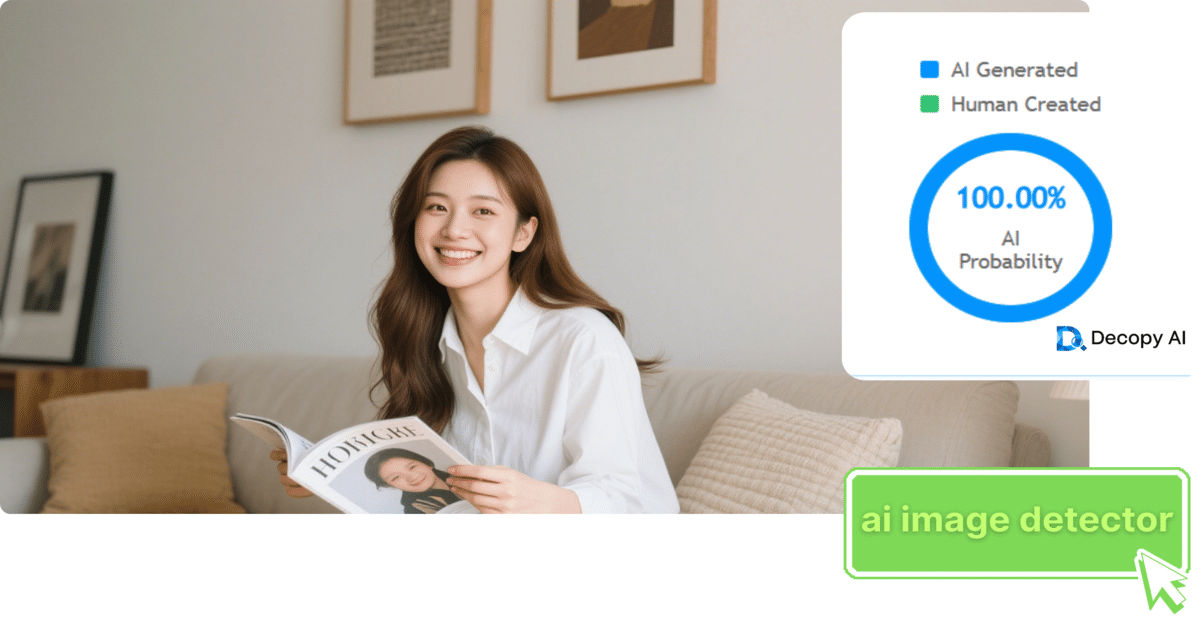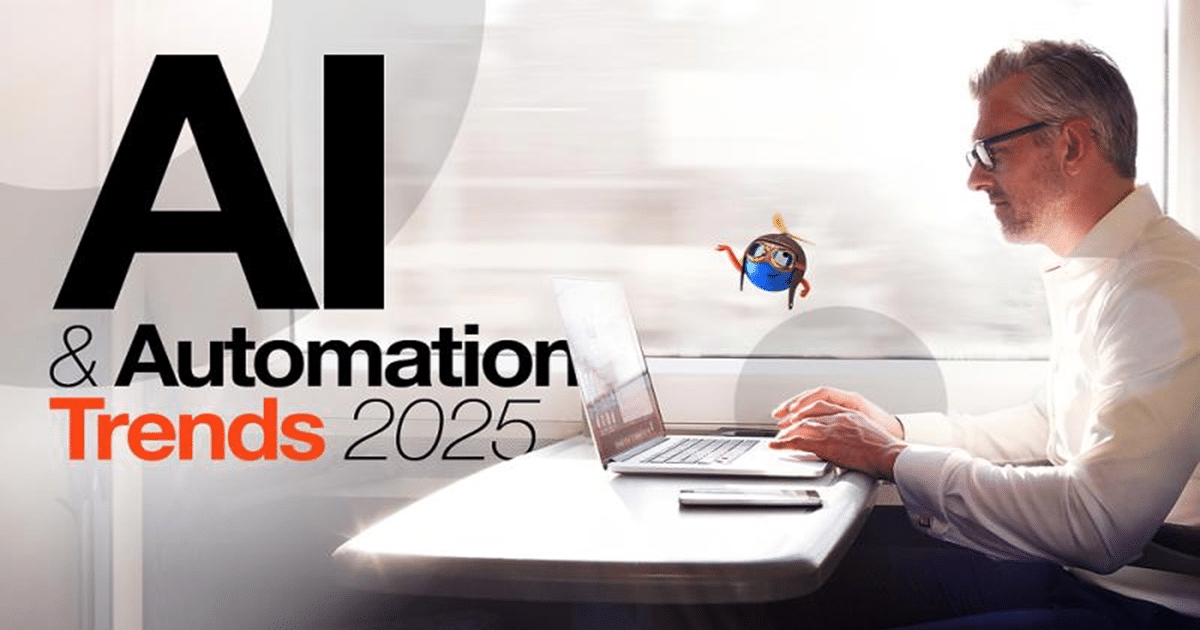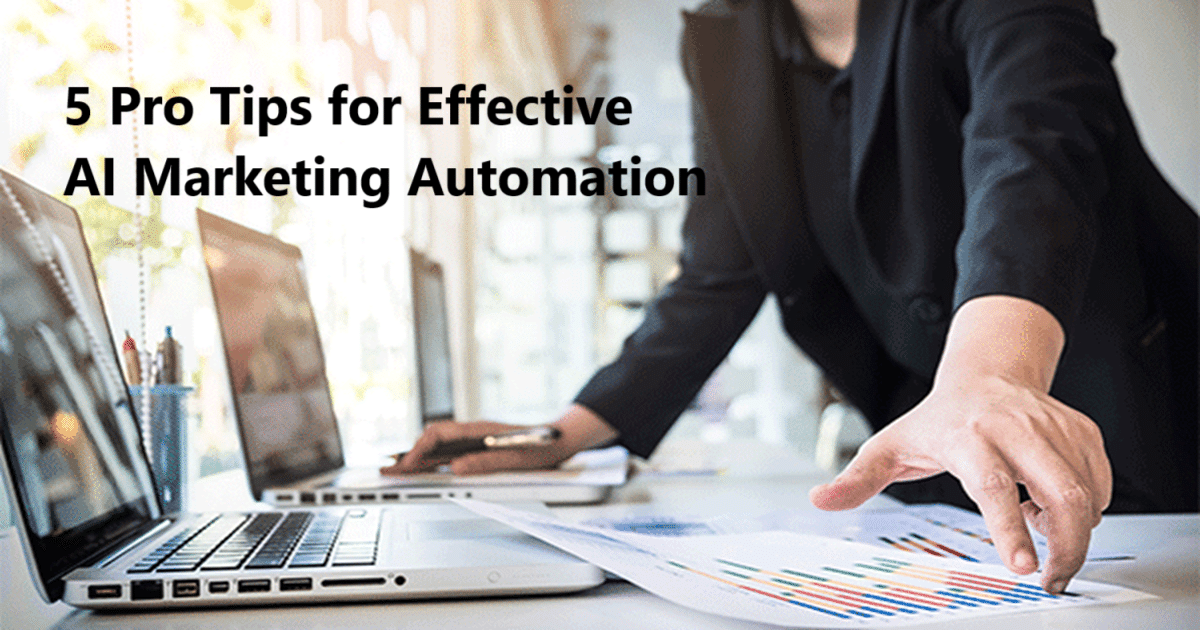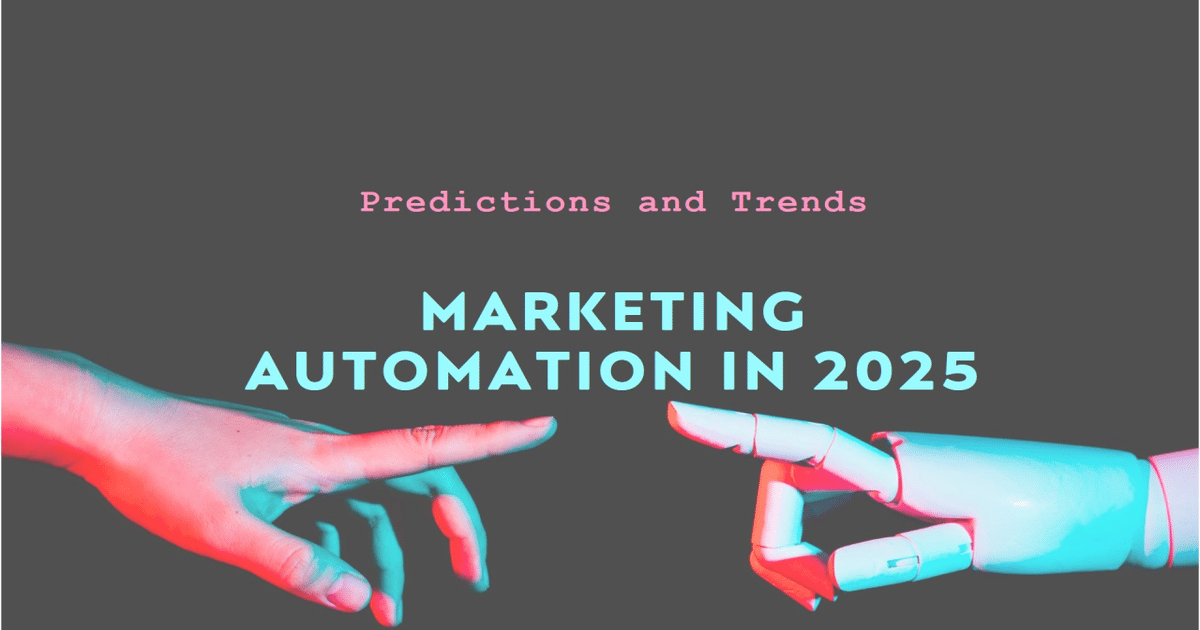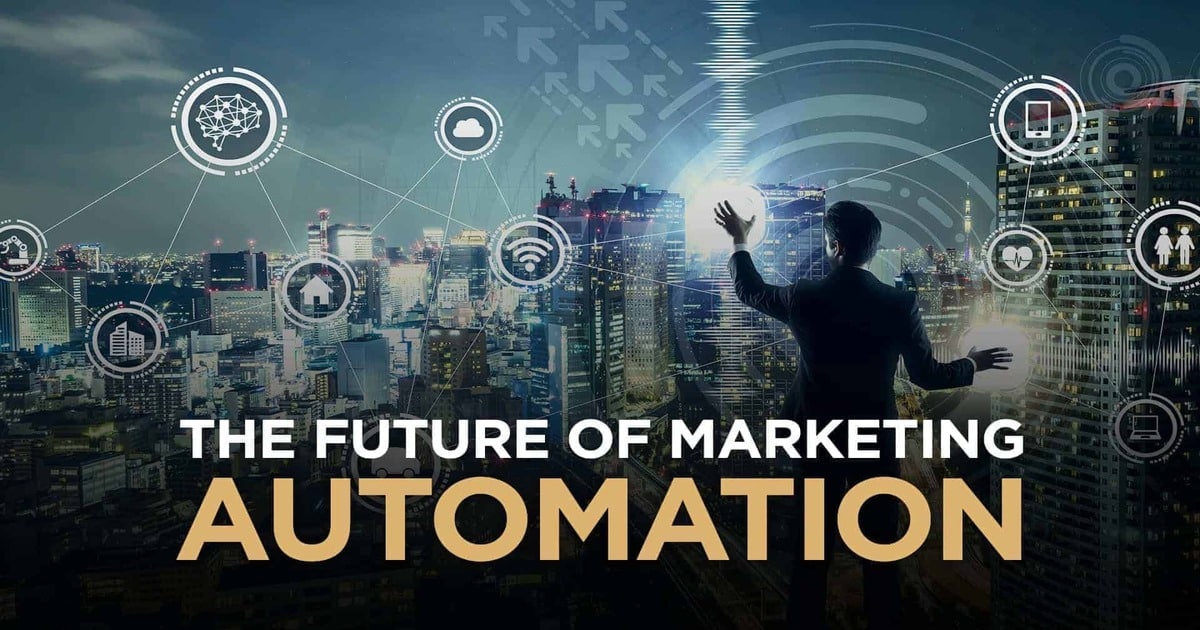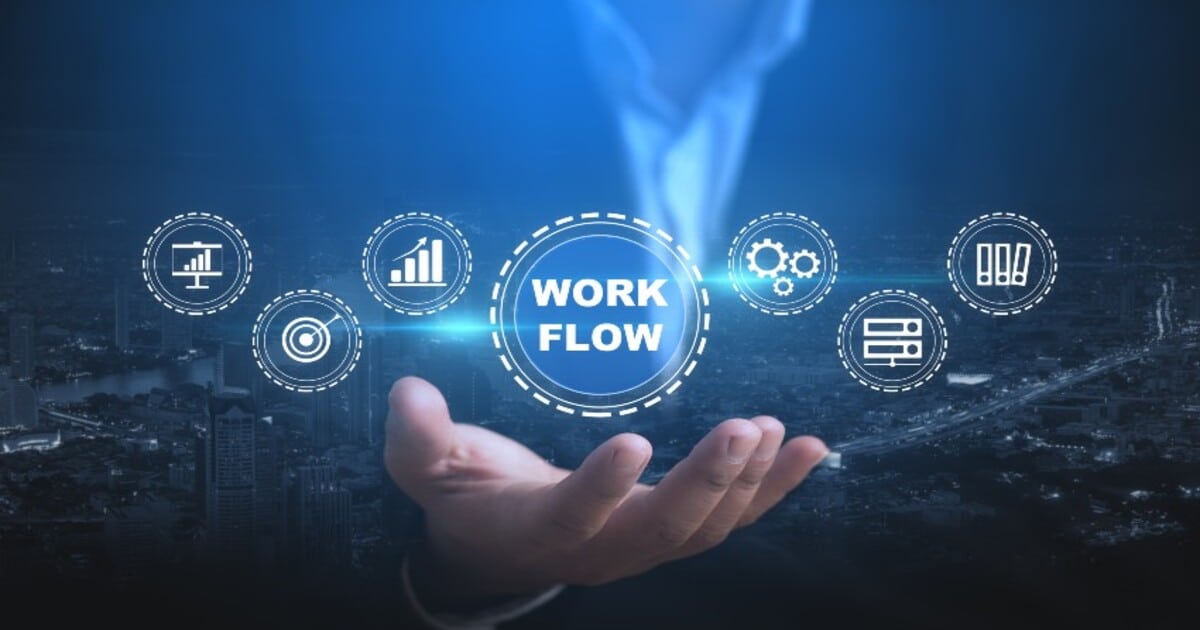Find out how to utilise an AI Image Detector to check internet phot in a smart way. Learn how to find phoney or changed images with certainty using tools, methods, and ethical principles.
A few years ago, what you saw was real. Not so much today. We can’t trust what we see online anymore. There are political deepfakes and AI-generated “people” who don’t exist. That’s why the AI image detector is coming out at the right time and is needed.
It’s getting more and more important to be able to discern what’s real and what’s fake because pictures are so important in news, ads, social media, and even academic study. We’ll talk about how AI image detectors function, how to use them safely, and which free and paid programs are the best in this article.
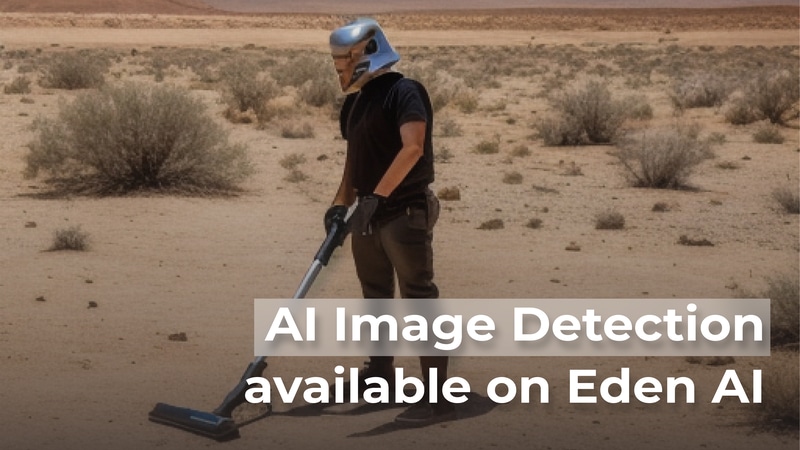
Why AI Image Detectors Are More Important Than Ever
People are no longer merely interested in fake pictures. They are a problem, and occasionally even a threat. A single fake picture can spread quickly and change people’s minds, change the facts, or hurt people’s reputations.
Some real-life examples are:
- bogus combat film used in campaigns to spread false information
- AI-generated faces on bogus LinkedIn profiles
- Changed medical photos in fake studies
There are genuine effects. That’s why AI image detectors are becoming more and more important. Not just for journalists and fact-checkers, but also for teachers, lawyers, employers, and regular people who want to know the truth about what they see.
What is an AI image detector?
An AI image detector looks at pictures to see if they were made, changed, or improved by AI. Some detectors are good at finding traces of deepfakes, while others are good at finding patterns left by generative models like Midjourney or DALL·E.
Most contemporary detectors compare the attributes of an image to huge collections of known AI-generated content. Some people look at information, pixel problems, lighting problems, or face symmetry to come to a decision.
In other words, these technologies hunt for digital fingerprints that AI leaves behind, including patterns that are too flawless, textures that are too smooth, or shadows that don’t follow the laws of physics.
How AI image detectors work behind the scenes
It helps to look at the most popular methods that AI image detectors employ to analyse images in order to understand how they work:
- Recognising patterns at the pixel level
Images made by AI typically include recurring patterns or small errors, such ears that aren’t shaped right, earrings that don’t match, or six fingers. Detectors look for these strange things and compare them to established AI output styles.
- Analysing Metadata
Some detectors look at EXIF data, which is the hidden information that is stored in photographs. AI tools often remove or change metadata, which can leave behind blank fields or strange marks.
- ELA (Error Level Analysis)
ELA reveals which parts of a picture have been compressed in different ways, which might help you find places where you can modify or change the image. Sometimes, AI technologies leave behind artefacts from uneven compression.
- Comparing Neural Networks
Deep learning models built on thousands of real and false photos are used by advanced detectors. These models figure out if a fresh picture fits the statistical patterns of content made by AI.
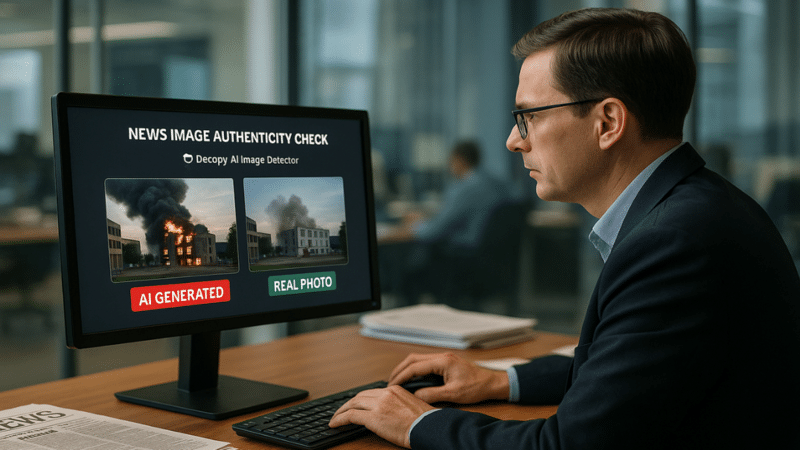
Best AI Image Detectors to Use in 2025
Here are some AI image detectors you may use to get started if you want to try one out. Many of them are free to use, and each one has its own set of features.
- Moderation of the Hive
Best for: keeping an eye on social media and keeping the platform safe
Features: access to the API, detection of NSFW content, and identification of deepfakes
Free Plan: Available with some restrictions
Pros: Quick to find, works well for content platforms
Cons: It can be too much for casual users.
- Sensity AI
Best for: Finding deepfakes and doing forensic analysis
Characteristics: Tracking the alteration of images and videos
Free Plan: Some tools are free; business plans are also available.
Pros: Forensic technology that is advanced
Cons: Needs some technical knowledge
- Illuminarty
Best for: Quickly finding AI-made images
Detects GANs and signs of diffusion models
Yes to the free plan
Pros: Simple to use, no need to sign up
Cons: It’s still being worked on
- Optic AI or Not
Best for: Finding out if an image was made by AI
Features: Easy to use interface and one-click analysis
Free Plan: Totally free Pros: Great for children and teachers
Disadvantages: It doesn’t give you thorough reports.
- Scanner for Deepware
Best for: Scanning deepfake videos and pictures. Features: an app-based interface and fast identification.
Free Plan: Limited; you can pay for a subscription
Pros: Great for fast checkups and on the go
Disadvantages: not much information about how to find things
How to Use an AI Image Detector in Daily Life
Do you not know how or when to employ an AI image detector? Here are some real-life situations where they are useful:
- Checking news photos
Run a startling photo from a news report via a detector before sharing it. It simply takes a few seconds to stop false information from spreading.
- Looking for stock photos
Designers and marketers can check to see if an AI made a stock image. This is very significant when the law requires that something be real or look like a person.
- Looking at LinkedIn profiles
AI image detectors can help recruiters find false headshots, which stops scams and fake job applications.
- Checking to see if academic or scientific images are real
Researchers looking at medical or biological images can look for AI improvements that could change the accuracy of the data.
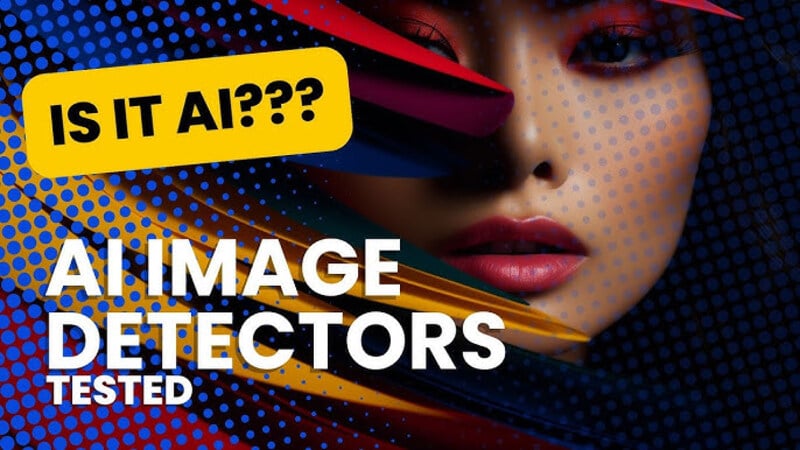
Questions of ethics around AI image detection
Like any other sophisticated instrument, AI image detectors raise their own moral issues.
- Consent and Privacy
Scanning other people’s pictures, especially intimate ones, can pose moral questions. Always think about if you have permission to look at the picture.
- Wrongly Identified Positives
Some detectors could incorrectly identify actual photos as being made by AI. If you don’t manage this carefully, it could hurt your credibility. Always use both the results of the tool and your own judgement.
- Clear Tools
A lot of free AI image detectors don’t mention how they function. People should be careful about putting all their faith in “black box” technology.
How to Find AI Images Without a Tool
Sometimes, the greatest way to find AI images is to use your own eyes and gut feelings. Keep an eye out for these things:
- Weird Eyes or Hands: AI still has trouble grasping anatomy; additional fingers or blurry eyes are a sign.
- Unnatural Lighting: Check for shadows that don’t match the scene or lighting that doesn’t match the scene.
- Weird Textures: AI textures don’t always look natural or have depth, especially in backdrops or fabric.
- Details that are missing: Eyelashes, earrings, or backdrops may look blurry or not complete. How to Discuss AI Image Detection in Class
Bringing AI image detectors into your classroom can lead to important conversations if you are a teacher. To get started, do this:
- Give Examples: Use side-by-side comparisons of real and AI photos.
- Talk about ethics: Is it okay for students to employ AI in art or design projects?
- Give out research tasks: Tell pupils to try out different tools and write about what they find. These exercises help people learn how to use technology, which is a very important ability in a world rich of digital stuff.
What AI image detectors will be like in the future
What will happen next in the field of AI image detection? Experts think that a number of things will happen:
- Browser Extensions That Work in Real Time
Users might soon be able to check photos right in their browser, like spellcheck does now.
- Watermarking with AI
Image generators could put invisible digital tags into AI images to make them easier to find.
- Checking the Blockchain
Some new businesses are looking into methods to use blockchain to keep a permanent record of where images come from.
These new ideas could make AI image detection faster, more accurate, and easier for everyone to use.
Why AI image detectors are important right now
We live in a world where pictures affect how we feel, vote, shop, and trust. But if such pictures are phoney or altered, the effects might be bad.
An AI image detector helps make our digital spaces clearer again. It tells us to stop, look, and ask questions. But most significantly, it makes us think critically.
Knowing how to check a picture can make a big impact, whether you’re a journalist safeguarding the truth, a parent teaching your child media literacy, or just someone who wants to keep informed.
To stay updated on the latest AI developments and tool reviews, follow us on our social media channels:
- Blog: https://aitoolsbiz.com/my-blog
- YouTube: https://youtube.com/@AItoolsbiz
- Twitter: https://x.com/AItoolsbiz
- LinkedIn: https://www.linkedin.com/in/aitoolsbiz

